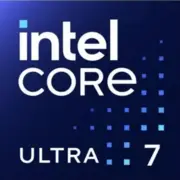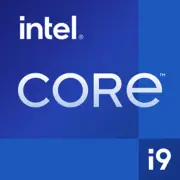Advantages
- Higher Technology: 7 nm (7 nm vs 10 nm (intel 7))
- More Total Cores: 24 (16 vs 24)
- Higher Performance-core Max Turbo Frequency: up to 5.8 GHz (4.8 GHz vs up to 5.8 GHz)
- Larger L3 Cache: 36 MB (shared) (24 MB shared vs 36 MB (shared))
- Newer Launch Date: January 2024 (December 2023 vs January 2024)
Basic
Intel
Label Name
Intel
December 2023
Launch Date
January 2024
Laptop
Platform
Mobile
Core Ultra 7 155H
Model Name
?
The Intel processor number is just one of several factors - along with processor brand, system configurations, and system-level benchmarks - to be considered when choosing the right processor for your computing needs.
Core i9-14900HX
Meteor Lake
Code Name
Raptor Lake-HX
-
Generation
Core i9 (Raptor Lake-HX Refresh)
CPU Specifications
16
Total Cores
?
Cores is a hardware term that describes the number of independent central processing units in a single computing component (die or chip).
24
22
Total Threads
?
Where applicable, Intel® Hyper-Threading Technology is only available on Performance-cores.
32
6
Performance-cores
8
10
Efficient-cores
16
3.8 GHz
Performance-core Base Frequency
2.2 GHz
1800 MHz
Efficient-core Base Frequency
1600 MHz up to 4.1 GHz
4.8 GHz
Performance-core Max Turbo Frequency
?
Maximum P-core turbo frequency derived from Intel® Turbo Boost Technology.
up to 5.8 GHz
112 KB per core
L1 Cache
80 KB (per core)
2 MB per core
L2 Cache
2 MB (per core)
24 MB shared
L3 Cache
36 MB (shared)
-
Bus Frequency
100 MHz
-
Multiplier
22.0x
Intel BGA 2049
CPU Socket
?
The socket is the component that provides the mechanical and electrical connections between the processor and motherboard.
Intel BGA 1964
-
Multiplier Unlocked
Yes
7 nm
Technology
?
Lithography refers to the semiconductor technology used to manufacture an integrated circuit, and is reported in nanometer (nm), indicative of the size of features built on the semiconductor.
10 nm (intel 7)
28 W
TDP
55 W
-
Max. Operating Temperature
?
Junction Temperature is the maximum temperature allowed at the processor die.
100°C
-
PCI Express Version
?
PCI Express Revision is the supported version of the PCI Express standard. Peripheral Component Interconnect Express (or PCIe) is a high-speed serial computer expansion bus standard for attaching hardware devices to a computer. The different PCI Express versions support different data rates.
Gen 5, 16 Lanes (CPU only)
Memory Specifications
DDR5-5600,LPDDR5x-7467
Memory Type
?
Intel® processors come in four different types: Single Channel, Dual Channel, Triple Channel, and Flex Mode. Maximum supported memory speed may be lower when populating multiple DIMMs per channel on products that support multiple memory channels.
DDR4, DDR5
96GB
Max Memory Size
?
Max memory size refers to the maximum memory capacity supported by the processor.
-
2
Memory Channels
?
The number of memory channels refers to the bandwidth operation for real world application.
Dual-channel
-
ECC Memory
Yes
GPU Specifications
Xe Graphics LPG 128EU
Integrated Graphics Model
?
An integrated GPU refers to the graphics core that is integrated into the CPU processor. Leveraging the processor's powerful computational capabilities and intelligent power efficiency management, it delivers outstanding graphics performance and a smooth application experience at a lower power consumption.
UHD Graphics 770
Benchmarks
Geekbench 6 Single Core
Core Ultra 7 155H
2419
Core i9-14900HX
2969
+23%
Geekbench 6 Multi Core
Core Ultra 7 155H
12418
Core i9-14900HX
17655
+42%
Geekbench 5 Single Core
Core Ultra 7 155H
1684
Core i9-14900HX
2053
+22%
Geekbench 5 Multi Core
Core Ultra 7 155H
10645
Core i9-14900HX
19393
+82%
Passmark CPU Single Core
Core Ultra 7 155H
3535
Core i9-14900HX
4328
+22%
Passmark CPU Multi Core
Core Ultra 7 155H
24961
Core i9-14900HX
47009
+88%
Related CPU Comparisons
Share in social media
Or Link To Us
<a href="https://cputronic.com/cpu/compare/intel-core-ultra-7-155h-vs-intel-core-i9-14900hx" target="_blank">Intel Core Ultra 7 155H vs Intel Core i9-14900HX</a>






